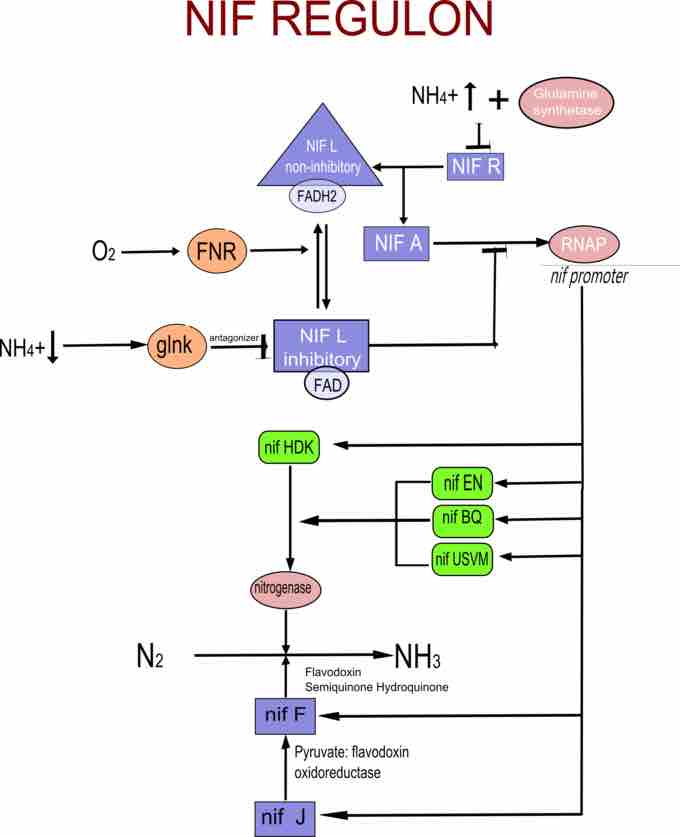The fixation of atmospheric nitrogen (N2) is a very energy intensive endeavor. If there is no need for N2 fixation, the production of proteins needed for fixation are tightly controlled. The nif genes are responsible for the coding of proteins related and associated with the fixation of atmospheric nitrogen into a form of nitrogen available to plants. These genes are found in nitrogen fixing bacteria and cyanobacteria. The nif genes are found in both free living nitrogen fixing bacteria and in symbiotic bacteria in various plants.
The nif genes are genes encoding enzymes involved in the fixation of atmospheric nitrogen. The primary enzyme encoded by the nif genes is the nitrogenase complex which is in charge of converting atmospheric nitrogen to other nitrogen forms such as ammonia, which plants can use for various purposes. Besides the nitrogenase enzyme, the nif genes also encode a number of regulatory proteins involved in nitrogen fixation. The expression of the nif genes is induced as a response to low concentrations of fixed nitrogen and oxygen concentrations (the low oxygen concentrations are actively maintained in the root environment). Nitrogen fixation is regulated by nif regulon, which is a set of seven operons which includes 17 nif genes. Nif genes have both positive and negative regulators. Some of nif genes are: Nif A, D, L,K, F,H S,U,Y,W,Z .

Nif Regulon
This is a schematic representing many of the proteins in the nif regulon and where they act in the pathway needed for nitrogen fixation.
Activation of nif genes transcription is done by the nitrogen sensitive NifA protein. When there isn't enough fixed nitrogen factor available for the plant's use, NtrC, which is a RNA polymerase, triggers NifA's expression. NifA then activates the rest of the transcription for the nif genes. If there is a sufficient amount of reduced nitrogen or oxygen is present, another protein is activated, NifL. In turn, NifL inhibits NifA activity, which results in the inhibition of nitrogenase formation. NifL is then regulated by other proteins that are sensors for the levels of O2 and ammonium in the surrounding environment.
The nif genes can be found on bacteria's chromosomes, but many times they are found on bacteria's plasmids with other genes related to nitrogen fixation, such as the genes needed for the bacteria to communicate with the plant host.